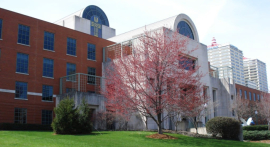
One of the most spectacular mosaics, the Be’er Shema (Birsama) mosaic discovered in Israel is now on display to the public for the first time.
According to All Israel News, the mosaic was found nearly 35 years ago near Kibbutz Urim in the Negev Desert and is believed to be approximately 1,600 years old.
“This is a unique mosaic from the Byzantine period (324-638 CE),” said Shaike Lender, one of the archaeologists who excavated the site along with Dan Gazit. “It presents 55 richly detailed medallions — with mythological characters, baskets of fruit, exotic animals, scenes from everyday life, hunting scenes and more. The mosaic was clearly made by the hand of a true artist.”
Artisans from the Byzantine era originally created this mosaic, which features multiple circles with intricate designs inside, to decorate a monastery. Archaeologists uncovered the ruins of a large winepress and warehouses with storage jugs, indicating that the monastery once produced wine as a source of income.
Ami Shahar, head of the Conservation Department at the Israel Antiquities Authority, explained the mosaic’s condition since its discovery in 1990.
“Over the ensuing years since its discovery, the mosaic floor’s state of conservation deteriorated. Given this situation, actions were taken. It was re-exposed, treated and strengthened, and transferred from its original exposed location to the Merhavim Council's enclosed compound. Now, it is fully protected from agricultural and development work, and at long last, it is presented to the public to appreciate,” he announced.
“Upon completion of our expert team’s intensive efforts, the results enable the public to view and appreciate a spectacular 1,600-year-old work of art.”
Eli Escusido, director of the Israel Antiquities Authority, stated that this new site will serve as an open archaeological garden for visitors. The mosaic will continue to be on view at the Merhavim Regional Council headquarters in the Negev, just east of the Gaza Strip.

















